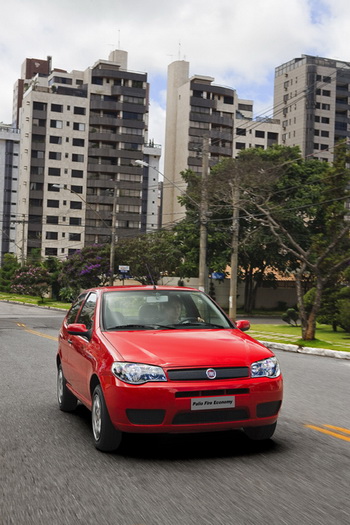 |
|
Fiat plans to
use the Zastava factory in Kragujevac,
Serbia, to produce a new low-cost B-segment
model that will be a replacement for the
long-running Fiat Palio and will be
sold on Eastern European markets. |
|
|
|
Serbian Minister of the Economy Mladjan Dinkic
has revealed that Fiat is just weeks away from
committing the first 100 million euro investment
in producing a new model at the Zastava factory
in Kragujevac and along with President Boris
Tadic he will visit Turin in November to view
a prototype of the new model.
Fiat will make
the first 100 million euro investment in Zastava at the end
of next month, with a total of 800 million euros being
invested in Serbia to realise the project. The news comes
almost exactly a year after Fiat signed up to ambitious
plans to buy a majority stake in the ailing state-owned carmaker and turn it
into a hub to build two new models, a new sub A-segment city
car dubbed the Topolino and a low-cost B-segment hatchback
targeted at emerging markets that would replace the
long-running Palio "world car family" model.
However the
deep impact on the car industry in Europe caused by the
global financial crisis and resulting recession threw these
plans almost immediately onto the scrap heap and instead the
Series 2 Fiat Punto which had been built by Zastava under
licence but ditched late last year to make room for the new
models was hurriedly put back into production in the Spring.
Instead a new and more scaled back plan will see just one of
these planned new cars initially put into production.
Dinkic revealed
the news that Fiat's plans for Zastava were back on track
this week during a forum of Serbian and Italian businessmen
that was called "Possibilities for investing in Serbia" and
which included a delegation of more than a hundred Italian
businessmen led by the Deputy Minister for Economic
Development Adolfo Urso. Addressing the
delegation Dinkic said that "Italian suppliers will have a
comparative advantage in Serbia if they decide to station
their factories here" as they will be able "to export their
products without customs duty to a market of over 800
million people thanks to the CEFTA." Dinkic also noted that
Italy is currently the third biggest investor in Serbia with
US$1 billion coming in last year.
There are more
than 200 Italian companies employing around 18,000 people
now represented in the country with a combined turnover of
US$2.5 billion.
"Italian-Serbian trade has doubled in the past three years,
and there is still room to improve the two countries
economic cooperation in a number of areas," added Urso.
Economic recovery in Serbia is expected during the final
half of the year and year-on-year GDP growth of 1.5 percent
is being targeted by the state government.
Dinkic and Urso
also signed a declaration between the two countries on
co-operation in the automotive components sector. The
arrival of Fiat is expected to bring more than 100 supplier
companies into Kragujevac and a parcel of land has already
been set aside for the construction of a new supplier park,
especially important as the plant will be adhering to the
latest industry standards of "just-in-time" component supply. Fiat
Groupís Iveco trucks-to-buses unit will also be setting up a
factory to build buses in the area while Magneti Marelli is
also planning a new facility.
|